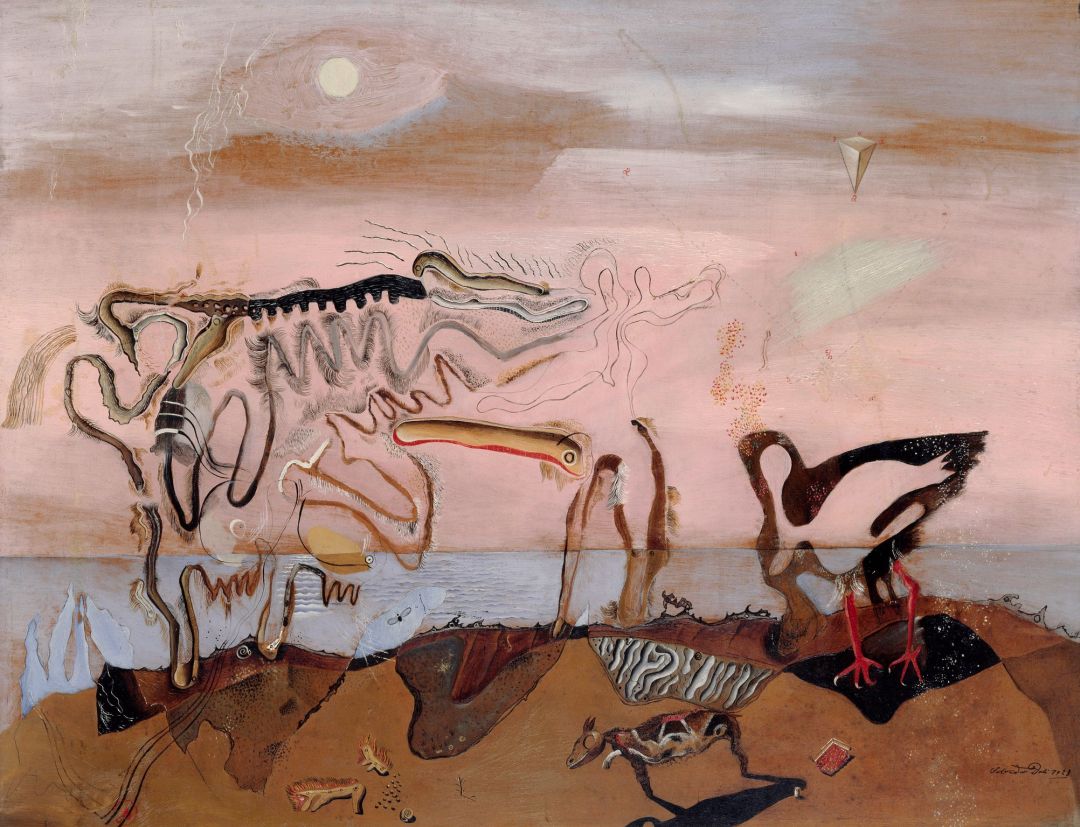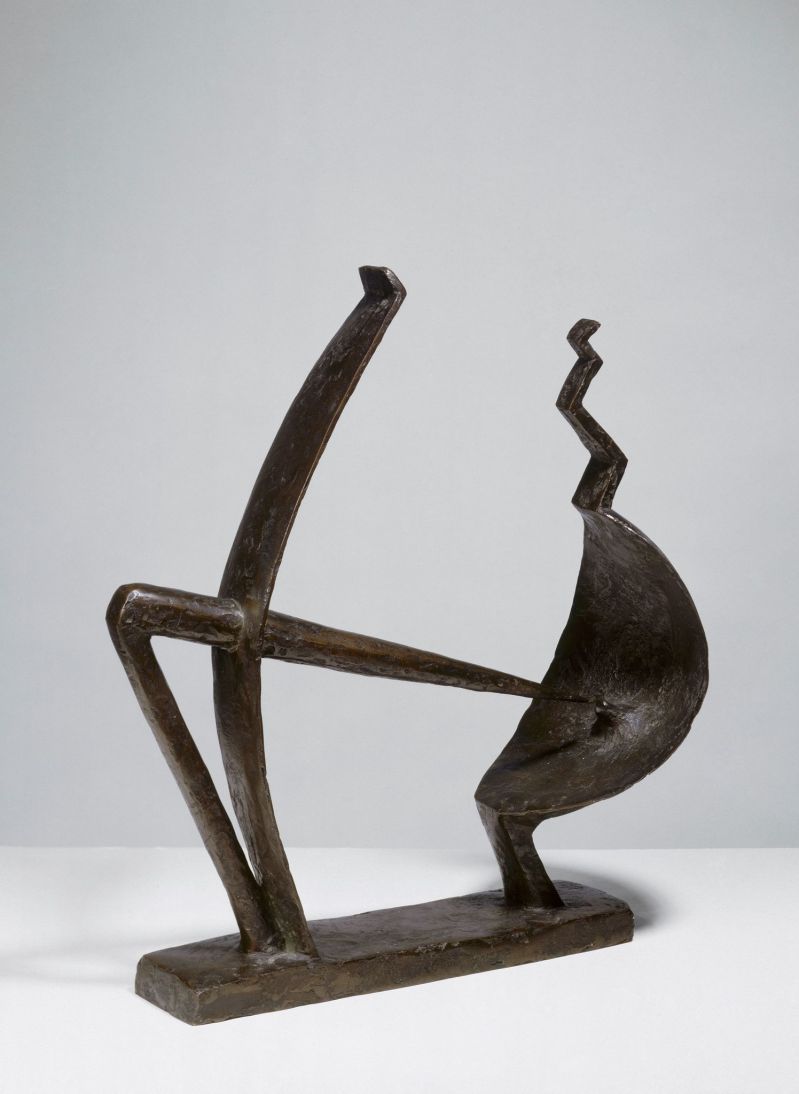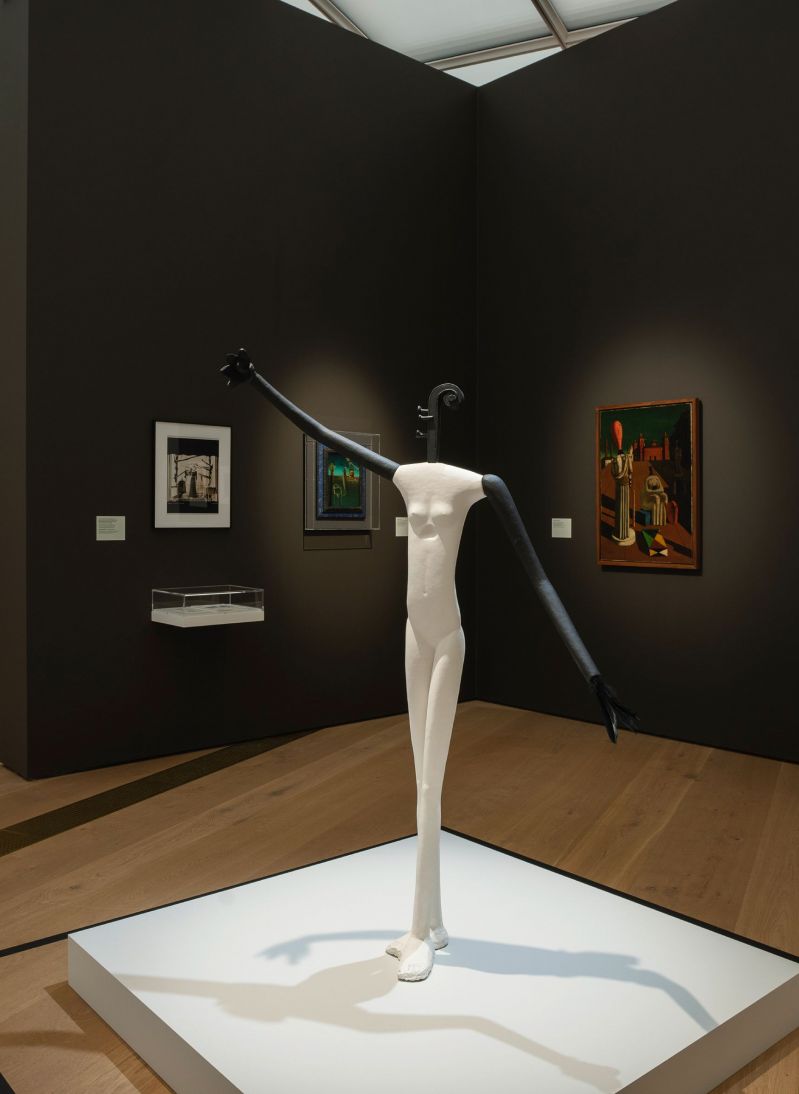JOIN the AFICIONADOS
To receive our world of travel and style delivered straight to your inbox.
Running until 2 July 2023, the Kunsthaus Zürich in Switzerland will be showing the first exhibition devoted to the Surrealist cooperation between Salvador Dalí and Alberto Giacometti. At its centre is the construction of a large project that was designed for a garden but never realized.
When the French collectors Charles de Noailles and his wife Marie-Laure commissioned Alberto Giacometti to design an installation for the grounds of their summer residence in the south of France, it marked a watershed moment in the artist’s career. The principal record of this idea is the important ‘Projet pour une place’ (Project for a Square) from 1931/32, an assemblage of individual, abstract formal elements. The separate parts were initially created in smaller-scale wooden models before later being cast full-size in plaster. The project as a whole was intended to be carved from stone, but was never made. Now reproduced in full scale, the imagined installation stands at the heart of the exhibition, which was devised by the Fondation Giacometti in Paris (curator Émilie Bouvard) and is curated at the Kunsthaus by Philippe Büttner together with his Parisian colleague. It is the first exhibition ever to bring together the results of spatial, Surrealist cooperations between Alberto Giacometti and Salvador Dalí. The visions and processes are documented in sketches and archival materials from both artists.
THE GARDEN OF DREAMS. PROJET POUR UNE PLACE
The project for a square began in 1929, when Giacometti designed the first of three figures for the de Noailles’ villa in Hyères. He also conceived a set of geometrical figures on a plateau, and from this the actual ‘Projet pour une place’ started to take shape. In his notebooks, the artist drew five elements that evoke myriad associations in the viewer’s mind. As if in a dream, the objects – a cone, a disc, a snake, a stele and a hemisphere – seem merely to hint at an actual function. Their forms oscillate between tangible and abstract, naturally organic and artificially constructed: objects with a character of their own that suddenly form a space in which visitors can immediately rediscover themselves. Covering a surface area the size of a pavilion (200 x 317 x 225 cm), Giacometti’s installation was to be located in the walled-off garden at the modernist Villa Noailles in Hyères. Later, Dalí came up with the idea of embedding these approximately human-sized
elements in a biomorphic garden landscape, as his sketch ‘Projet pour les Noailles’ (1932/33) reveals. It was a collaborative work based on a shared mindset.
OBJECTS WITH A SYMBOLIC FUNCTION
In April 1930, Breton and Dalí discovered Giacometti’s famous ‘Boule suspendue’ in an exhibition at Galerie Pierre in Paris, whereupon they invited Giacometti to join the Surrealists. Their shared credo was that the entire world of the human psyche should now be expressed through art. That also included themes which had hitherto been suppressed, such as sexuality and violence, obsessions and cruelty, which had come to the fore through the teachings of Freud and on the battlefields of the First World War. Giacometti’s object consists of a basic form similar to a slice of melon, over which a sphere suspended on a cord and with a matching notch cut out of it swings back and forth. The object suggests to the viewer that the ball is moving in an erotically charged manner over the form located beneath it. In 1931, inspired by this work of Giacometti’s, Dalí published an important text in which he called for the creation of further such objects, which he termed ‘objets à fonctionnement symbolique’, or objects with a symbolic function. The insistence on the – at least potential – presence of a mechanical function within an object (also seen in Giacometti’s ‘Boule suspendue’) played a central role. As with the Surrealist cinema of the time – an innovative genre of which arguably the most prominent exemplar, Luis Buñuel’s ‘Chien andalou’ from 1929 with its notorious scene of a razor slicing through an eyeball, can be seen here – the element of motion is once again essential. Dalí, incidentally, was involved in writing the screenplay for the film, which is how André Breton became aware of him.
DIVING INTO THE CREATIVE WORLD OF SURREALISM
The exhibition at the Kunsthaus presents an important group of Surrealist objects by Giacometti, including the ‘Boule suspendue’, a key work from the Basel holdings of the Alberto Giacometti Foundation. A small but select group of paintings by Dalí reminds the visitor of the phantasmagorical visual world for which he is still famous today. Important sketches by Giacometti and Dalí – including a number from the former’s rarely shown ‘carnets’ (sketchbooks) – as well as documents and photographs complement the exhibition, making it a uniquely immersive experience of the creative world of Parisian Surrealism in the early 1930s.
For once, Surrealism reveals itself as an artistic movement that, through collaboration between two of its leading exponents, sought large form and open space. The presentation, which was previously shown at the Institut Giacometti in Paris, explores how – thanks to his cooperation with Salvador Dalí – the far-sighted Alberto Giacometti devised a new way of conceiving art: one that viewed the artwork as an object which, when placed in space like an installation, left conventional ideas of sculpture trailing in its wake. It is complemented by the works of other Surrealist artists including Luis Buñuel and Yves Tanguy.



Lovers of Salvador Dalí can further explore his life and works in his beloved Costa Brava in the L'Empordà region of Spain. Salvador Dalí was born in Figueres, visit the homage to his life at the wonderfully unique Teatre-Museu Dalí, Dali's house at Port Lligat and the magical Castell Gala – Salvador Dalí's Castle in Púbol, where Dalí bore his romantic heart to his wife.